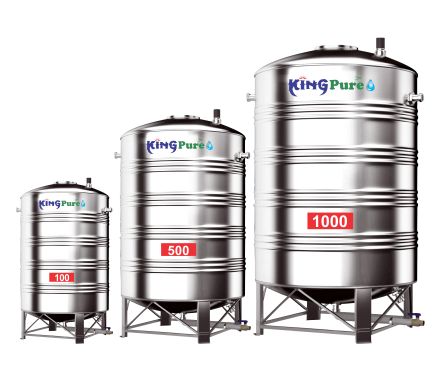Stainless steel tanks are used in various industries for different purposes such as storage, transportation, and mixing of liquids, gases, and solids. Stainless steel is preferred for its strength, durability, and resistance to corrosion. Here are the top 5 types of stainless steel tanks:
1. Vertical stainless steel tanks Vertical stainless steel tanks are cylindrical in shape and have a vertical orientation. They are commonly used for storage and mixing of liquids such as chemicals, food products, and pharmaceuticals. The tanks can be customized to meet specific requirements such as capacity, height, and diameter. Vertical tanks can be either open or closed, with closed tanks providing additional protection against contamination and spillage. Vertical are commonly used in the food and beverage industry for storing liquids such as milk, juice, and wine. The tanks are designed to meet strict hygiene standards and can be cleaned easily. They are also used in the chemical industry for storing acids, alkalis, and other hazardous chemicals. Vertical are preferred for their strength and durability, which ensure that the contents of the tank are protected from external factors such as temperature and pressure.
2. Horizontal stainless steel tanks are similar to vertical tanks, but they have a horizontal orientation. They are commonly used for storage and transportation of liquids such as fuel and oil. Horizontal tanks are designed to be transported on trucks and trailers and can be easily loaded and unloaded. The tanks can be customized to meet specific requirements such as capacity, length, and width. Horizontal are commonly used in the petrochemical industry for storing and transporting crude oil, gasoline, and other fuels. The tanks are designed to meet strict safety standards and can withstand extreme temperatures and pressure. Horizontal tanks are also used in the agriculture industry for storing and transporting fertilizers and pesticides.
3. Jacketed stainless steel tanks Jacketed stainless steel tanks are designed with an outer jacket that surrounds the main tank, creating a space for heating or cooling. The jacket can be either single or double-walled, with double-walled jackets providing additional protection against contamination and spillage. The tanks are commonly used in the food and beverage industry for processes such as pasteurization and fermentation. Jacketed are designed to maintain a consistent temperature, which is critical for certain processes such as fermentation. The tanks can be customized to meet specific requirements such as heating and cooling capacity, temperature control, and agitation. Jacketed tanks are also used in the pharmaceutical industry for processes such as crystallization and purification.
4. Insulated stainless steel tanks Insulated are designed with a layer of insulation around the tank to maintain the temperature of the contents. The insulation can be either rigid or flexible, with flexible insulation providing additional protection against vibration and shock. Insulated tanks are commonly used for storage and transportation of temperature-sensitive products, such as wine and dairy products. Insulated are designed to maintain a consistent temperature, which is critical for certain products such as wine. The tanks can be customized to meet specific requirements such as insulation thickness, temperature control, and humidity control. Insulated tanks are also used in the chemical industry for storing and transporting hazardous chemicals that require a specific temperature range.
5. Mixing stainless steel tanks Mixing stainless steel tanks are designed with a mixing system that allows for the blending of liquids or powders. The mixing system can be either mechanical or pneumatic, with mechanical systems providing higher shear forces and pneumatic systems providing more gentle mixing. Mixing tanks are commonly used in the chemical, pharmaceutical, and food industries

